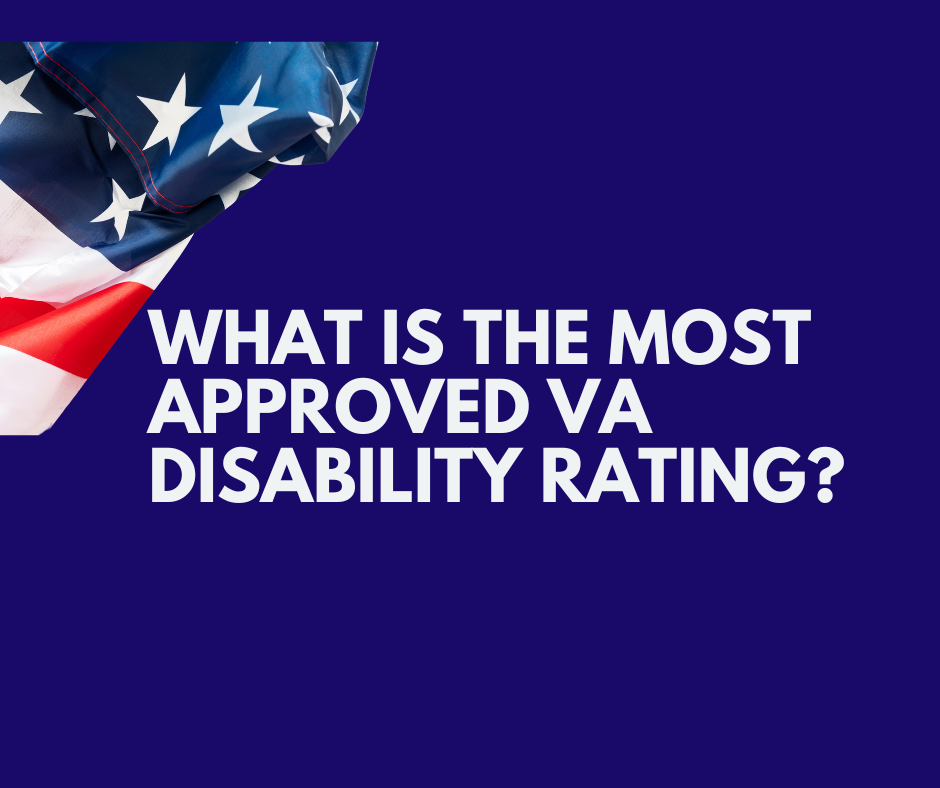Navigating the world of VA disability benefits can be challenging, especially when faced with temporary disabilities that impact your daily life. But fear not, for we have created this comprehensive guide to help you understand VA temporary disability ratings, their different types, and how to obtain them. Get ready to gain valuable insights and take control of your situation as you embark on the journey towards securing the compensation you deserve.
Key Takeaways
-
VA temporary disability ratings provide financial aid for veterans with service-connected disabilities and are reassessed over a period of up to one year.
-
The amount of compensation and duration of benefits depend on factors such as base monthly compensation, the number of dependents, and the length of disability.
-
Appealing denied claims or seeking professional assistance from veteran law attorneys can help increase chances for successful VA disability benefits.
Understanding VA Temporary Disability Ratings

For veterans who have suffered severe service-connected disabilities, VA temporary disability ratings can provide much-needed financial support during the healing process. These ratings are designed for disabilities anticipated to improve over time, and grasping the difference between temporary and permanent VA disability ratings is vital.
Temporary disability ratings are assigned for a period of up to one year and can be adjusted.
Service-Connected Disabilities
Service-connected disabilities are medical conditions directly linked to a veteran’s military service, making them eligible for VA disability benefits. These disability related issues can range from physical injuries sustained during combat to mental health problems resulting from traumatic experiences.
Temporary vs. Permanent Disability Ratings
While both temporary and permanent disability ratings offer financial assistance to veterans, there’s a distinct difference between the two. Temporary disability ratings are assigned for a finite period, with the expectation that the condition will improve.
On the other hand, permanent ratings are indefinite and do not have an expiration date. Fully grasping this distinction is key as it impacts both the duration of the benefits and the reevaluation process.
Types of Temporary Disability Ratings

-
There are 3 types of temporary disability ratings: i. Prestabilization ii. Hospitalization iii. Convalescence.
-
These ratings are issued to the people who cannot carry out their daily activities due to an illness or injury. Each type caters to different scenarios and has specific eligibility criteria and durations.
Familiarizing yourself with these types can guide you in determining which one is the most suitable for your needs, guaranteeing that you receive the necessary support during your recovery period.
Prestabilization Ratings
Prestabilization ratings are assigned to veterans with unstable conditions that are expected to improve. These ratings provide up to 100% disability compensation for up to one year.
Veterans who receive a 100% prestabilization rating will suffer from an unstable medical condition caused while serving in the military. This disability is expected to be very severe. Prestabilization ratings are meant to compensate recently discharged servicemembers for any employment losses they may experience due to their service-related disability.
Hospitalization Ratings
Hospitalization ratings provide a 100% disability rating for veterans hospitalized for more than 21 days due to a service-connected disability. To be eligible for a hospitalization rating, the treatment must be conducted at a VA hospital, VA medical center, or a VA-approved facility.
The hospitalization rating is effective from the first day of hospitalization. It remains valid until the end of the month of hospital discharge in a VA or VA-approved hospital.
Convalescence Ratings
Convalescence ratings offer temporary 100% disability compensation during the recovery period after surgery or injury. These ratings last up to six months, depending on the severity of the condition and the recovery time needed.
To be eligible for a convalescence rating, medical documentation confirming the need for convalescence must be provided, such as a letter from a physician indicating that you are unable to return to work.
Applying for a Temporary Disability Rating

To apply for a temporary disability rating, there are three key steps you must take: obtain a medical diagnosis, prove service connection, and secure a medical nexus from a doctor.
By successfully completing these steps, you can increase your chances of receiving the disability benefits you need during the recovery process.
Medical Diagnosis
Obtaining VA disability compensation necessitates a medical diagnosis. This diagnosis must come from a VA-approved or traditional medical practitioner.
A credible and detailed diagnosis will not only support your claim, but also provide valuable information on the severity of your condition and the potential need for ongoing treatment.
Proving Service Connection
To receive disability benefits, establishing a service connected disability is necessary. This involves demonstrating that an incident or condition during your military service caused your disability.
By providing evidence of the link between your condition and your military service, you can ensure that your claim for disability compensation is considered seriously and fairly by the VA.
Obtaining a Medical Nexus
A medical nexus is a statement from a medical professional confirming that your condition was caused by military service. By obtaining this nexus, you prevent the VA from denying your claim on the grounds of insufficient evidence or unrelated conditions.
A nexus letter from a qualified healthcare professional is typically sufficient for this purpose, as it helps to establish the connection between a patient’s condition and their normal or healthy state.
Compensation Amounts and Duration of Benefits

The compensation amounts for temporary total disability ratings depend on several factors, such as base monthly compensation, the number of dependents, and the duration of temporary disability benefits.
Comprehending these factors and their impact on your compensation allows you to make a more accurate estimation of the financial support you’ll receive throughout your recovery process.
Base Monthly Compensation
The VA determines base monthly compensation, which varies depending on the severity of your disability. This base compensation serves as a starting point for the calculation of your disability benefits and can be adjusted based on additional factors, such as the number of dependents you have.
Number of Dependents
The number of dependents you have can directly impact the compensation amount for your temporary disability benefits. The VA provides supplemental compensation for dependents, such as a spouse, children, and dependent parents, with the exact amount varying depending on the number and type of dependents.
Accurate documentation of your dependents in your claim is critical to receiving the right compensation.
Duration of Temporary Benefits
Temporary benefits have varying durations depending on the type of temporary rating: prestabilization (up to 1 year), hospitalization (until treatment completion), and convalescence (up to 6 months).
Knowing the specific timeframes for each rating type allows you to plan accordingly and guarantees that you receive the necessary support throughout your recovery process.
Managing Multiple Conditions and Ratings
For veterans with multiple service-connected disabilities, the combined rating calculation can help prioritize the most severe condition for temporary disability benefits. This ensures that you receive the maximum possible compensation during your recovery while taking into account all of your service-connected conditions.
Combined Rating Calculation
The combined rating calculation takes into account all of your service-connected disabilities to determine an overall disability rating. The established rating plays a key role in determining the amount of compensation you’ll receive for your temporary disability benefits.
Comprehending the combined rating calculation guarantees that all of your disabilities are accurately represented and compensated.
Prioritizing Severe Conditions
While only the most severe condition is eligible for a temporary total disability, it’s important to remember that other conditions can be permanently rated and combined for an overall disability rating.
By prioritizing the most severe condition and addressing other disabilities with permanent ratings, you can maximize your compensation and ensure you receive the support you need throughout your recovery process.
Appealing Denied Claims and Seeking Assistance
In case your temporary disability claim is denied, remember that you have the right to file an appeal and seek professional assistance from veteran law attorneys or organizations like Lawyers for American Vets.
Undertaking these steps can bolster your chances of a successful appeal and guarantee appropriate compensation for your disabilities.
Filing an Appeal

Filing an appeal involves submitting a Higher-Level Review, Supplemental Claim or Board Appeal: Notice of Disagreement.
Adhering to the appeal process and providing all necessary documentation can enhance your chances of overturning the VA’s decision and obtaining the compensation you deserve.
Seeking Professional Help
Seeking professional help from a veteran law attorney like Lawyers for American Vets can increase your chances of a successful appeal and ensure proper compensation for your disabilities. We have have the experience and knowledge necessary to navigate the complex VA system and help you present a strong case for your appeal.
With our expertise at your disposal, you can concentrate on your recovery while they strive to secure the benefits you deserve.
Summary
In conclusion, understanding VA temporary disability ratings, their types, and the application process is crucial for veterans seeking financial support during their recovery process. By prioritizing severe conditions, managing multiple ratings, and seeking professional help when needed, you can ensure that you receive the compensation you deserve. Remember, you are not alone in this journey, and countless resources and advocates, like Lawyers for American Vets, are available to assist you every step of the way. Call us today for a free consultation.
Frequently Asked Questions
Can the VA give temporary disability?
The VA can provide temporary disability benefits through a prestabilization rating for veterans who have recently ended their active military service with a service-connected disability, allowing them short-term replacement of income due to an injury or medical condition that has yet to stabilize.
This prestabilization rating can help veterans bridge the gap between their active service and the time it takes for their disability to be fully evaluated and rated. It can provide a temporary source of income while they wait for their disability rating to be finalized.
How long does temporary VA disability last?
Temporary VA disability typically lasts from 1 to 3 months, depending on the individual’s unique situation.
After that period, the VA will re-examine the case and assign a new rating based on the change in the claimant’s condition.
Is there a temporary 100 VA disability?
A temporary 100% VA disability rating can be awarded to veterans with a service-connected condition considered “unstable” that requires frequent monitoring and testing. This rating can last for up to 3 months, with the potential for an extension of 3 more months in more severe cases.
Hospitalization for more than 21 days due to a disability related to military service may also qualify for a 100% temporary rating.
What is the difference between temporary and permanent disability ratings?
Temporary disability ratings are assigned for a finite period with the expectation that the condition will improve, while permanent ratings are indefinite and do not have an expiration date, lasting until the individual’s condition changes.
Permanent ratings are indefinite and do not have an expiration date, lasting until the individual’s condition changes. This means that the individual will receive benefits for as long as their condition remains unchanged.









